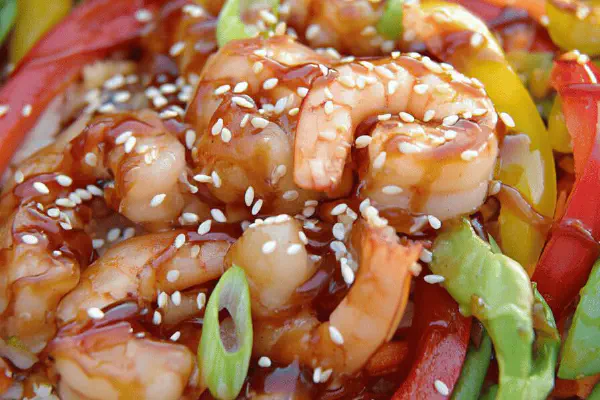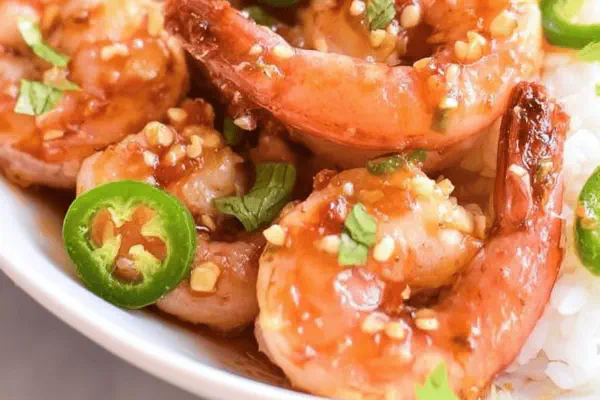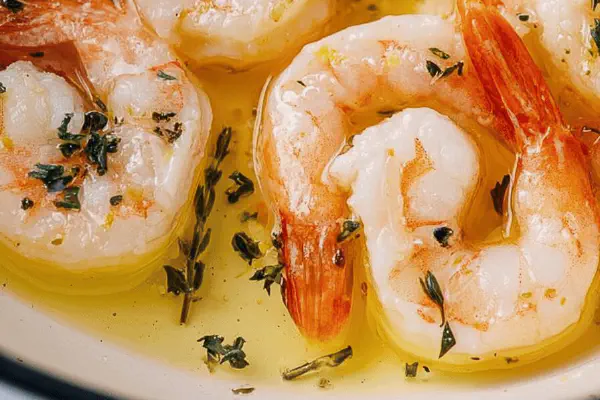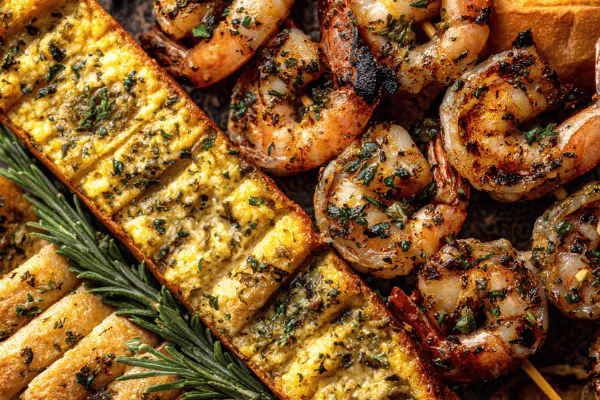Spicy Kimchi Shrimp Sauté

E
By Emma
Certified Culinary Professional
•
Recipe tested & approved
Shrimp cooked with aged kimchi, scallions, garlic, and toasted sesame. Uses less oil, replaces some sugar with honey, swaps toasted sesame seeds for crushed peanuts to add crunch, and adds a hint of fresh ginger. Quick stir-fry that thickens kimchi juice and finishes off with a fresh scallion burst. Serve over jasmine rice or noodles for a savory, tangy, nutty twist.
Prep:
12 min
Cook:
10 min
Total:
22 min
Servings:
4 servings
#Korean
#shrimp
#seafood
#stir-fry
#quick meals
Shrimp with kimchi. Quick, sharp, sour notes. Garlic hits first, then ginger warms inside the fold. Peanuts crushed, adding crunch. Sesame oil sizzles in the pan, lifts flavors. Scallions split white and green, whites soften early, greens hold last-minute freshness. Honey tamed the sharp kimchi bite, balancing. Shrimp go in, cook fast, no overdone rubbery bites. Juice reduces almost dry, sticky glaze clings. Serve over jasmine rice or noodles. Simple, spicy, nutty. Not traditional but close enough. Twist on a classic quick seafood stir. Choppy layers, big flavor, fast.
Ingredients
- 3 scallions, white part finely chopped, green part cut into 2.5 cm pieces
- 3 cloves garlic, minced
- 10 ml vegetable oil
- 400 ml kimchi, preferably fermented
- 3 ml honey
- 400 g peeled and deveined small shrimp (about 80-100 count)
- 10 ml toasted sesame oil
- 10 ml crushed roasted peanuts
- 5 ml finely grated fresh ginger
About the ingredients
Scallions divided white and green, different functions—white for softening the base, green to finish for freshness. Garlic and fresh ginger add aromatic depth. Vegetable oil for initial sauté, neutral flavor. Kimchi ripe or homemade, must have that fermented punch. Honey instead of sugar provides caramel notes and balances acidity. Shrimp small, peeled, deveined, easy to cook evenly. Toasted sesame oil added near end to maintain aroma. Peanuts replace sesame seeds here for texture contrast, crushed, not whole, to avoid overwhelming bites. Adjust oil amounts slightly depending on pan size and heat source. Best fresh, but kimchi can be refrigerated weeks.
Method
- Heat vegetable oil over medium heat in large skillet.
- Add white scallions and garlic, sauté 90 seconds until softened but not browned.
- Stir in kimchi, grated ginger, and honey; cook 4-5 minutes, reduce liquid until almost evaporated, stirring frequently to prevent burning.
- Add shrimp, sesame oil, and crushed peanuts; stir-fry 3-4 minutes, until shrimp turn opaque and curl.
- Toss in green scallion pieces last 30 seconds.
- Serve immediately, over jasmine rice or choice of noodles.
Cooking tips
Start heating oil medium, not high; prevent garlic burn. White scallions in first minute plus half, soften not brown. Stir kimchi in next, broil down liquid, around 4-5 minutes, juice must reduce almost dry, sticky and concentrated flavors. Ginger grated fine, added with kimchi for even flavor distribution. Shrimp in last, quick stir frying 3-4 minutes; cook until just opaque, firm but tender. Sesame oil and peanuts tossed in quickly to coat and add aroma and crunch. Green scallions added at end for color and freshness, no cooking needed. Serve immediately; leftovers reheat quickly but shrimp toughens if overcooked.
Chef's notes
- 💡 Use fresh shrimp. Small, peeled, deveined. They cook faster. Look for pink ones. Frozen? Thaw completely first. Quick cooking is key, no rubbery bites. Sesame oil best at end. That aroma is crucial.
- 💡 Kimchi variety matters. Choose well-fermented. Store-bought is fine, homemade even better. Flavor intensifies with age. Balance honey and kimchi acidity. Adjust honey—more or less depending on your taste.
- 💡 Dry out that kimchi juice. Broil down to near nothing. Concentrated flavor helps. Stir often to avoid burning. Medium heat is best. Garlic? Don’t brown it. Needs to soften only.
- 💡 Peanuts add crunch. Crushed not whole. Avoid oversizing pieces. Texture contrast important. If sesame seeds are preferred—use but dial back. Flavor can be too strong—find balance.
- 💡 Green scallions? Last-minute only. Bright freshness adds color. Cook them slightly? You lose that crispness. Simple but effective technique. Serve immediately for best taste. Leftovers are okay, but reheat carefully.
Common questions
How to reduce kimchi juice effectively?
Medium heat is key. Stir frequently to prevent burning. Broil down until almost dry. Sticky, concentrated flavor is what you want.
Can I use larger shrimp for this recipe?
Yes, but cook longer. Adjust the time based on size. Check for opacity. Firm is fine, rubbery is not. Adjust cooking time wisely.
What should I do with leftovers?
Store in airtight container. Refrigerate, won't last forever. Reheat quickly. Careful—shrimp toughen if overcooked. Better fresh but reheating is okay.
Can I skip the peanuts?
Absolutely. Substitute sesame seeds if needed. Different crunch though. Or just skip them entirely. Kimchi and shrimp still delicious all on their own.



